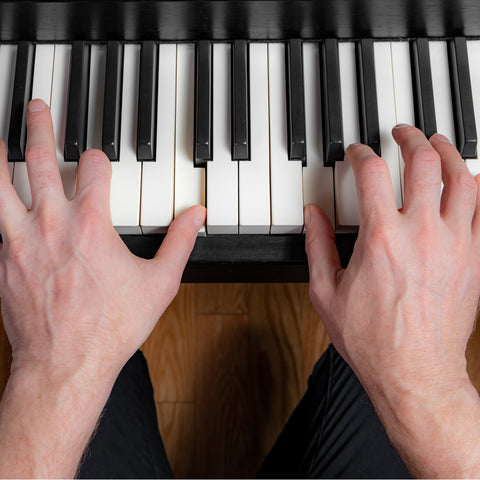Kid's Piano Motor Skills

Kid's piano motor skills are based on their perceptions, which sometimes are cloudy at best. Have you ever tried asking a three year old which is his left hand? He's not really concerned with his hands unless he's reaching for cookies.
So many of the skills of piano are mental, spatial, abstract, mathematical and complex. Younger brains are barely ready for this stuff.
You have to go to the base, and that is left and right. "In which hand do you hold your pencil?" It is a question I ask all the time. If a child is hazy about this, it will be impossible to build more skills upon that.
You can still have fun with other things, but a child is seriously at a disadvantage if they have not mastered left/right.
MAKE KIDS AWARE OF THEIR HANDS AND FINGERS
Next is finger dexterity, and awareness of the fingers as a group. Some younger kids are completely unaware of their hands. The teacher has to diagnose the state of the child's brain through these exercises (both hands, dexterity, etc.)
Devise games that teach the child's brain to see the patterns of music and develop the correct motor skills. At the piano, each skill is built upon another, so it is crucial to get the base skill correct, left/right.
Some motor skills are based upon age, and the brain will have trouble with this skill until it is ready to manage it. A perfect example is playing with both hands. Another is adding chords with the left hand to a simple melody.
It takes time for little brains to manage these things. Here are some tests you can do to find the state of separation of their brain hemispheres.
TICK TOCK
Have the child play 5 12 5 12 5 12 5 12 (five twelve) over and over again. 5 is played with the left hand, and 12 is played by the right hand. Further, ask them to make the 5-12 regular, like a clock going tick-tock.
If they can manage a regular beat between the two hands, their brain hemispheres have at least started to talk. Kids too young for the connection will bang their hands excitedly but cannot find 5-12 accurately.
FINGERING
Another test is fingering. Kids either can manage their fingers separately or they can't. If they can't, let them use the index uni-finger.
Teach a song like Mary Had A Little Lamb.
Mary Had A Little Lamb
| 3 2 1 2 * | 3 3 3 * | 2 2 2 * | 3 3 3 * |
| 3 2 1 2 | 3 3 3 * | 2 2 3 2 | 1 * * * |
THE OBJECTIVE IS FIVE FINGERS IN A ROW
First, try to get the child to play with their fingers in a row, with the third finger on the key number 3. The song is played with thumb, index and third fingers. See how well they manage. Now ask them to play the same song but use only the right index finger.
You'll see that they manage with one finger better than the first three. Being able to manage fingers separately is a sign of brain growth. You really can't rush it. Better to understand where they are, and help them right there.
REFERENCES
Motor Skills
Precursor Skill Piano Games
Children’s Piano Motor Skills Defined by Age
Abstract Skills Of Piano
Age Affects Motor Skills
Basic Piano Skills for Kids




